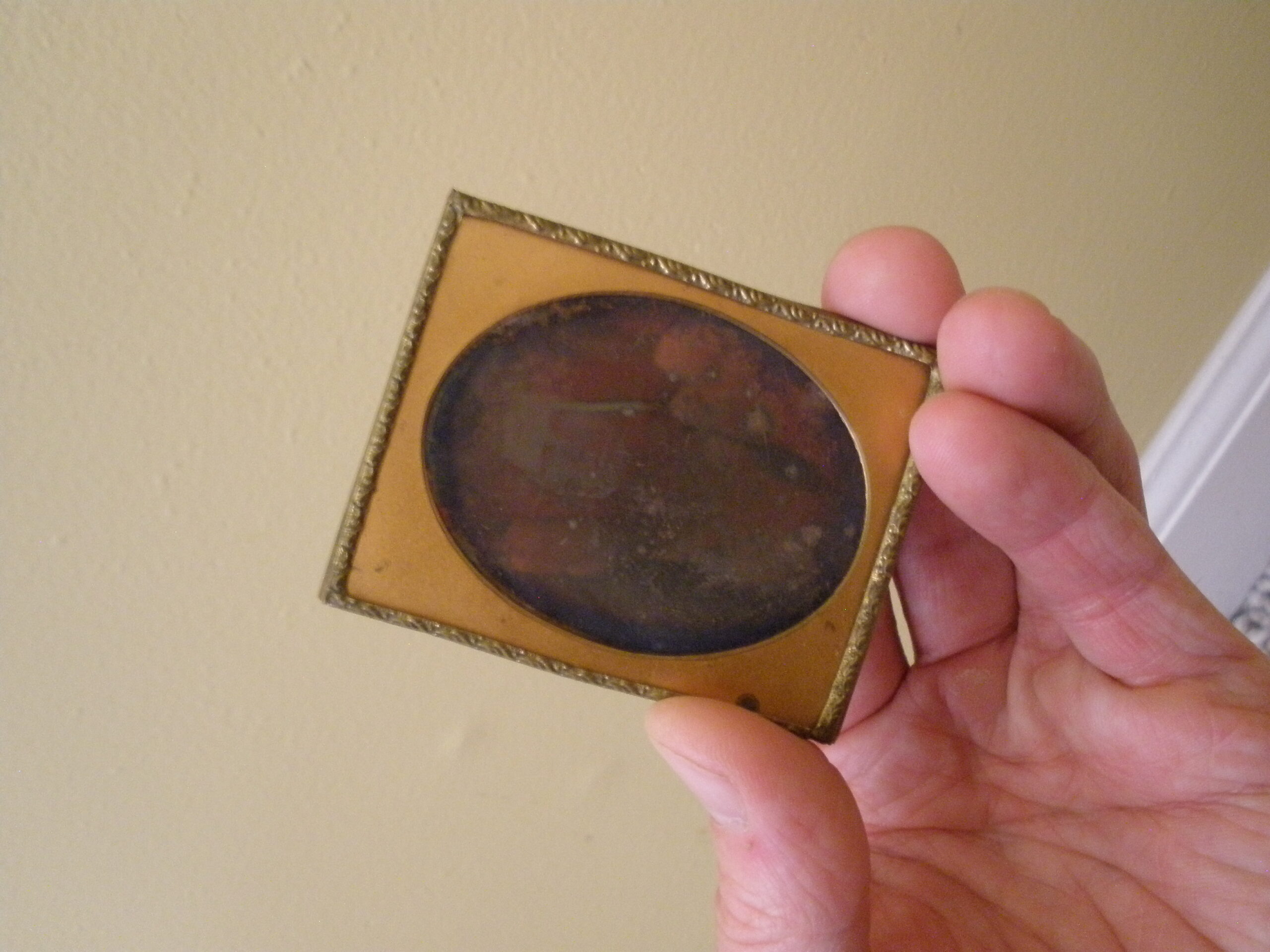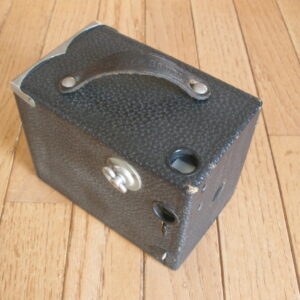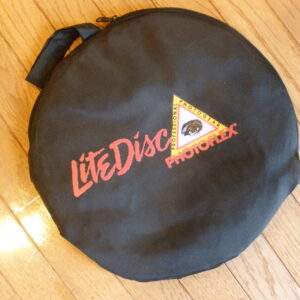For sale is an 1850s DAGUERREOTYPE PHOTOGRAPH of a STERN GENTLEMAN. The faded photograph image of the man is only visible when viewed from a certain angle. When viewed from other angles the photo resembles a silver mirror. The gold foil frame measures about 2 1/2 inches by 2 inches. The back of the case has a paper insert which reads: “Keep the other side clean by rubbing it with a rag or a piece of Chamois Skin – Taken with the Double Camera For 25 Cents, By TYLER & CO., Cor. of Winter & Washington Sts., Boston. 600 Daily Beware of Imitators”. An uncommon type of antique photograph.
Daguerreotype was the first publicly available photographic process and was widely used between the 1840s and 1850s. Daguerreotypes photos have a mirror-like, highly polished silver surface and its dually negative/positive appearance when viewed from different angles or in raking light. Daguerreotypes are typically housed in miniature hinged cases made of wood covered with leather, paper, cloth, or mother of pearl. Daguerreotypes were produced on a thin copper metal support that had a polished coating of silver that was mirror-like. Daguerreotypes were sealed in glass for protection. The tintype replaced the daguerreotype in the 1860s because it developed much more quickly. A daguerreotype might take several hours to develop, but a tintype could be given to the sitter within minutes. Tintypes, patented in 1856, are actually on iron, not tin.
A daguerreotype photograph produces a positive image seen under glass, Daguerreotype photographs appear to be on a mirror and when viewing it at an angle the dark areas are silver. Daguerreotypes are backed by shiny silver, while ambrotypes are backed by a piece of glass painted black.
For an ambrotype photo, the dark areas remain dark even at an angle. While a daguerreotype produced a positive image seen under glass, ambrotypes produced a negative image that became visible when the glass was backed by black material. Daguerreotypes are backed by shiny silver, while ambrotypes are backed by a piece of glass painted black.








